Puberty educator and parent of three Melissa Pintor Carnagey has written an informative, compassionate, engaging, and LGBTQ-inclusive guide for “tween and young teens of many different bodies, gender identities, and puberty journeys.”
The book is inclusive of all genders from the start; unsurprising given that Carnagey is themself nonbinary. Indeed, it asserts early on that “Puberty is not binary,” explaining that “it is not limited to only two types of experiences based on gender or body parts.”
It covers topics one might expect in a book on puberty: changing anatomy and physiology, hygiene, body hair, periods, self-care, friends, crushes/romance, and more. It also discusses sex and masturbation, which some books on puberty don’t—that’s not a judgment, though, just a note so you can find what you’re seeking for your particular kid(s). Notably, it affirms that “[Sex is] not just when a penis is inserted into a vagina, though that is one way sex happens.” It also discusses consent and boundaries.
Additionally, it looks at a few subjects not always covered, puberty blockers, intersex identities, toxic masculinity, choosing a bra (or choosing not to wear one), binders and packers, period poverty (and the history of period products)
I particularly appreciate that the book is inclusive of all genders and sexual orientations throughout. One chapter, however, dives deeper into “Puberty Across the Gender Universe.” It explains the long history of nonbinary genders around the world; how clothing, hair, makeup, and more can help one feel aligned with one’s gender; pronouns and how to respect them; finding gender-affirming spaces and healthcare; sharing about one’s nonbinary gender with family; and more.
Each chapter includes suggested topics, questions, and activities for readers to write about, talk about, and “have fun” with. While these include some serious questions for reflection, they also include hands-on experiments like using rubber bands to understand how vocal cords change during puberty.
Backmatter includes substantial lists of additional books, online resources, and a glossary for youth, along with some titles for parents and other adults. My only criticism of the book comes here, with the inclusion of This Is So Awkward: Modern Puberty Explained as a recommended title for parents/adults; This Is So Awkward (perhaps inadvertently) cites some problematic research about trans youth, as I detailed in my review of that title. (A better option, though published too late for inclusion in the first edition of Growing Into You! is The Crucial Years, by Sheryl Gonzalez Ziegler (Harvest).
The past few years have happily seen a small but growing number of LGBTQ-inclusive books about puberty (many of which are included in above backmatter), and (the This Is So Awkward recommendation aside) Growing Into You! takes its place among them as a solid choice. The two others I like best are You-ology: A Puberty Guide for EVERY Body and Sex Is a Funny Word (and its sequel, You Know, Sex, for slightly older youth). YOU-ology doesn’t discuss sex or masturbation, but has the authority of the American Academy of Pediatrics behind it and does a good job describing the many physical and emotional changes of puberty. Sex Is a Funny Word is told in a graphic/comic style, with verve and flair. I won’t recommend any of these three titles over the others, as much will be a matter of what resonates with any particular reader. (I encourage you to click through to my reviews of them all, and to peruse the other middle grade titles on gender, bodies, and sex ed in case any of those appeal to you, too.) Nonbinary readers and their parents/adults, however, may particularly appreciate Growing into You! because of Carnagey’s authorship and awareness, although it is aimed at youth of any and all genders.










